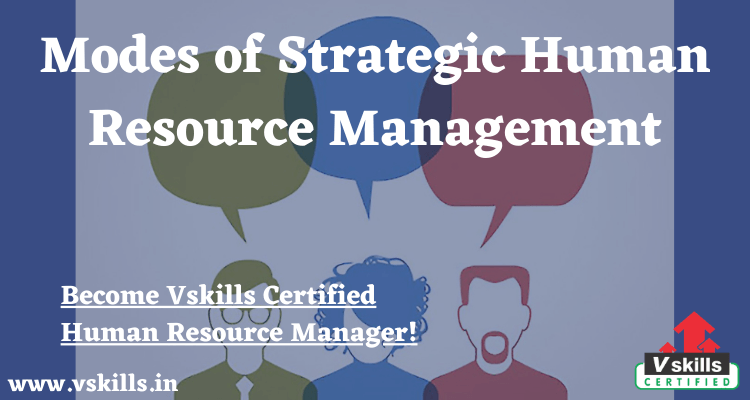Strategic HR management refers to the process of aligning an organization’s human resource strategies with its overall business strategy to achieve its goals. The prescriptive and descriptive management defines strategic management as a cycle that involves multifarious activities dependent upon each other. The strategic human resource management process can be disintegrated into five essential stages: mission and objectives, environmental assessment, strategic formulation, strategic implementation and strategic evaluation. All five stages interact with each other at different levels.
At the corporate level, strategic human resource management involves activities centered towards appraising the objectives of the organization and strategic evaluation. Firstly, the top-level managers assess their positions vis-à-vis the current mission and objectives of the organization. The mission broadly signifies the values and aim of the organization, while objectives direct the employees towards a rewarding performance.
The environmental assessment gives an insight of the internal environment of an organization – its strengths and weaknesses, and its external environment – its opportunities and threats. The critical factors with a direct influence over the future of an organization include strategic factors and they could be recapitulated into SWOT (Strengths, Weaknesses, Opportunities and Threats).
In case of strategic formulation, top-level managers assess the relationship between strategic factors and composing strategic choices that serve as a guiding tool for the managers to meet the objectives of the organization. Strategies may be formulated at corporate, business as well as various other functional levels. Strategic choices made, involves questions such as who has the decision-making power and why such decisions were taken.
There are several modes of strategic HR management that organizations can adopt:
- Administrative mode: This mode focuses on traditional HR functions, such as recruitment, training, and compensation, to ensure compliance with legal requirements and efficient management of employee data.
- Operational mode: This mode involves using HR practices to support operational goals, such as improving productivity and reducing costs. Examples include implementing performance management systems, employee engagement initiatives, and workforce planning.
- Strategic mode: This mode involves aligning HR practices with the organization’s overall strategy to achieve competitive advantage. This may include developing talent management programs, succession planning, and building a strong employer brand.
- Transformational mode: This mode involves using HR practices to drive significant organizational change, such as restructuring, mergers and acquisitions, and cultural transformation.
Overall, effective strategic HR management requires a deep understanding of the organization’s business strategy, its current and future talent needs, and the external environment in which it operates.
Practice Question
Q1. Which mode of strategic HR management focuses on traditional HR functions, such as recruitment, training, and compensation?
a) Administrative mode
b) Operational mode
c) Strategic mode
d) Transformational mode
Correct Answer: (a) Administrative mode
Q2. Which mode of strategic HR management involves using HR practices to support operational goals, such as improving productivity and reducing costs?
a) Administrative mode
b) Operational mode
c) Strategic mode
d) Transformational mode
Correct Answer: (b) Operational mode
Q3. Which mode of strategic HR management involves aligning HR practices with the organization’s overall strategy to achieve competitive advantage?
a) Administrative mode
b) Operational mode
c) Strategic mode
d) Transformational mode
Correct Answer: (c) Strategic mode
Q4. Which mode of strategic HR management involves using HR practices to drive significant organizational change, such as restructuring, mergers and acquisitions, and cultural transformation?
a) Administrative mode
b) Operational mode
c) Strategic mode
d) Transformational mode
Correct Answer: (d) Transformational mode
Q5. Which mode of strategic HR management requires a deep understanding of the organization’s business strategy, its current and future talent needs, and the external environment in which it operates?
a) Administrative mode
b) Operational mode
c) Strategic mode
d) Transformational mode
Correct Answer: (c) Strategic mode
 Stay Ahead with the Power of Upskilling - Invest in Yourself!
Stay Ahead with the Power of Upskilling - Invest in Yourself! 



